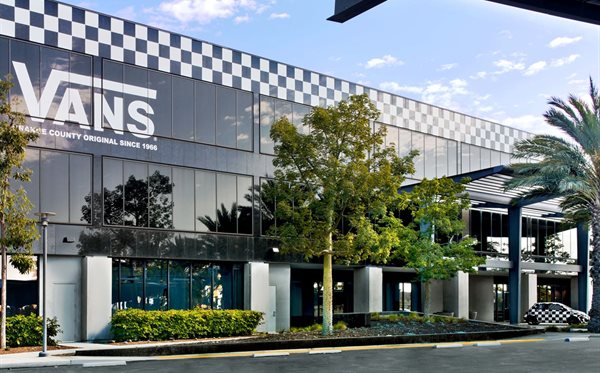Vans sets out global sustainability goals to achieve by 2030

As part of Vans’ commitment to inspire youth culture, it recognises the urgency to move towards circular products and will deploy systems that design out waste, in tandem, aiding the United Nations in achieving the organisation’s Sustainable Development Goal 12 to ensure responsible consumption and production patterns.
“At Vans, we believe that sustainability starts with all of us, but can only be accomplished in partnership,” says Kim Matsoukas, senior manager of sustainability at Vans.
Matsoukas adds, “Enabling creative expression is central to Vans. As a purpose-driven company that is engrained in youth culture, we are leveraging our commitment to creativity to seek new solutions that reimagine the lifecycle of our products and protect the environment for future generations.
"And while there’s more work for us to do, through our Vans family, partnerships with Pur Projet, Terra Genesis, and other leading environmental organisations, we’re proud to accomplish these goals by 2030 as we look to create a brighter future for our environment, our communities, and our planet.”
To achieve its sustainability vision by 2030, Vans’ commitments include:
Top materials will be 100% regenerative, responsibly-sourced, renewable or recycled
By 2030, 100% of Vans’ top materials will be regenerative, responsibly-sourced, renewable or recycled, including rubber, cotton, leather, and polyester.
Additionally, the company will commit to a 43% carbon reduction by:
• Reducing the average impact of top materials by 35% by 2025
• Utilising 50% recycled polyester by 2025
• Sourcing 100% sustainably grown cotton by 2025
Carbon reduction by 30%
By 2030, Vans will pilot and scale regenerative, recycled and responsibly-sourced materials covering 85% of the brand’s materials. When combined with other programmes like working with suppliers to implement renewable energy in our supply chain, the move to regenerative, recycled and responsibly sourced renewable materials will help Vans achieve its goal of a 30% absolute reduction of scope 3 carbon emissions from a 2017 baseline.
This includes:
• Piloting and scaling regenerative agriculture practices on farms and ranches that produce rubber, cotton, and leather then using these materials in our products
• Exploring bio-based alternatives with lower carbon footprints than traditional petroleum-based synthetic materials
• Converting virgin polyester used in our footwear, apparel and accessories to recycled sources
Eliminate all single-use plastic packaging
By 2025, Vans is committed to eliminating all single-use plastic packaging and reducing waste at every point of its business model. This includes:
• No plastic shopping bags in our retail spaces by the end of 2021
• Remaining packaging will be minimised, originated from sustainable sources and designed for recyclability
Renewable energy in 100% of owned and operated facilities by 2025
Vans is working toward converting all owned and operated facilities to 100% renewable energy by 2025. In 2017, the company began this transition by installing a 1 MW solar array at its headquarters, achieving a LEED platinum certification – one of the highest standards for sustainable buildings in the world. This mission extends beyond the headquarters, with the goal of having all owned and operated facilities converted by 2025.
The company says it recognises a collective effort and cross-collaboration across the entire Vans Family, from employees and partners, to athletes, ambassadors and consumers when it comes to creating circularity. Partners, including Terra Genesis who generate regenerative rubber and Indigo Ag who supply cotton are looking forward to working closely with Vans to achieve their sustainability goals.
Consumers are encouraged to visit vans.eu/sustainability to track the progress of Vans’ global sustainability vision and learn more about other brand initiatives that ladder up to Vans’ commitment to protecting the environment for future generations.












